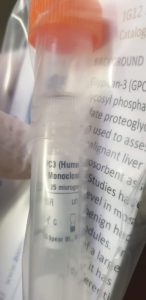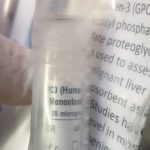Amyloid-related imaging abnormalities in amyloid-modifying therapeutic trials: suggestions from the Alzheimer’s Association Research Roundtable Workgroup.
Amyloid imaging associated abnormalities (ARIA) have now been reported in scientific trials with a number of therapeutic avenues to decrease amyloid-β burden in Alzheimer’s illness (AD). In response to issues raised by the Food and Drug Administration, the Alzheimer’s Association Research Roundtable convened a working group to evaluate the publicly accessible trial knowledge, makes an attempt at growing animal fashions, and the literature on the pure historical past and pathology of associated situations. The spectrum of ARIA contains sign hyperintensities on fluid attenuation inversion recoverysequences thought to symbolize “vasogenic edema” and/or sulcal effusion (ARIA-E), in addition to sign hypointensities on GRE/T2* thought to symbolize hemosiderin deposits (ARIA-H), together with microhemorrhage and superficial siderosis.
The etiology of ARIA stays unclear however the prevailing knowledge assist vascular amyloid as a standard pathophysiological mechanism resulting in elevated vascular permeability. The workgroup proposes suggestions for the detection and monitoring of ARIA in ongoing AD scientific trials, in addition to instructions for future analysis. The chemokine, monocyte chemoattractant protein-1 (CCL2), is a significant component driving leukocyte infiltration into the mind parenchyma in quite a lot of neuropathologic situations related to irritation, together with stroke. In addition, latest research point out that CCL2 and its receptor (CCR2) might have an necessary position in regulating blood-brain barrier (BBB) permeability. This research evaluated the position of the CCL2/CCR2 axis in regulating postischemic irritation, BBB breakdown, and vasogenic edema formation.

Quantification of elevated cellularity throughout inflammatory demyelination.
Multiple sclerosis is characterised by inflammatory demyelination and irreversible axonal harm resulting in everlasting neurological disabilities. Diffusion tensor imaging demonstrates an improved functionality over commonplace magnetic resonance imaging to distinguish axon from myelin pathologies. However, the elevated cellularity and vasogenic oedema related to irritation can’t be detected or separated from axon/myelin harm by diffusion tensor imaging, limiting its scientific purposes. A novel diffusion foundation spectrum imaging, able to characterizing water diffusion properties related to axon/myelin harm and irritation, was developed to quantitatively reveal white matter pathologies in central nervous system problems.
Tissue phantoms manufactured from regular fastened mouse trigeminal nerves juxtaposed with and with out gel had been employed to show the feasibility of diffusion foundation spectrum imaging to quantify baseline cellularity in the absence and presence of vasogenic oedema. Following the phantom research, in vivo diffusion foundation spectrum imaging and diffusion tensor imaging with immunohistochemistry validation had been carried out on the corpus callosum of cuprizone handled mice. Results show that in vivo diffusion foundation spectrum imaging can successfully separate the confounding results of elevated cellularity and/or gray matter contamination, permitting profitable detection of immunohistochemistry confirmed axonal harm and/or demyelination in center and rostral corpus callosum that had been missed by diffusion tensor imaging. In addition, diffusion foundation spectrum imaging-derived cellularity strongly correlated with numbers of cell nuclei decided utilizing immunohistochemistry. Our findings counsel that diffusion foundation spectrum imaging has nice potential to offer non-invasive biomarkers for neuroinflammation, axonal harm and demyelination coexisting in a number of sclerosis.
[Linking template=”default” type=”products” search=”Creatine Assay Kit” header=”2″ limit=”134″ start=”3″ showCatalogNumber=”true” showSize=”true” showSupplier=”true” showPrice=”true” showDescription=”true” showAdditionalInformation=”true” showImage=”true” showSchemaMarkup=”true” imageWidth=”” imageHeight=””]
Aquaporin-4 (AQP4) is a water-channel protein expressed strongly in the mind, predominantly in astrocyte foot processes on the borders between the mind parenchyma and main fluid compartments, together with cerebrospinal fluid (CSF) and blood. This distribution means that AQP4 controls water fluxes into and out of the mind parenchyma. Experiments utilizing AQP4-null mice present sturdy proof for AQP4 involvement in cerebral water steadiness. AQP4-null mice are shielded from mobile (cytotoxic) mind edema produced by water intoxication, mind ischemia, or meningitis. However, AQP4 deletion aggravates vasogenic (fluid leak) mind edema produced by tumor, cortical freeze, intraparenchymal fluid infusion, or mind abscess. In cytotoxic edema, AQP4 deletion slows the speed of water entry into mind, whereas in vasogenic edema, AQP4 deletion reduces the speed of water outflow from mind parenchyma. AQP4 deletion additionally worsens obstructive hydrocephalus
